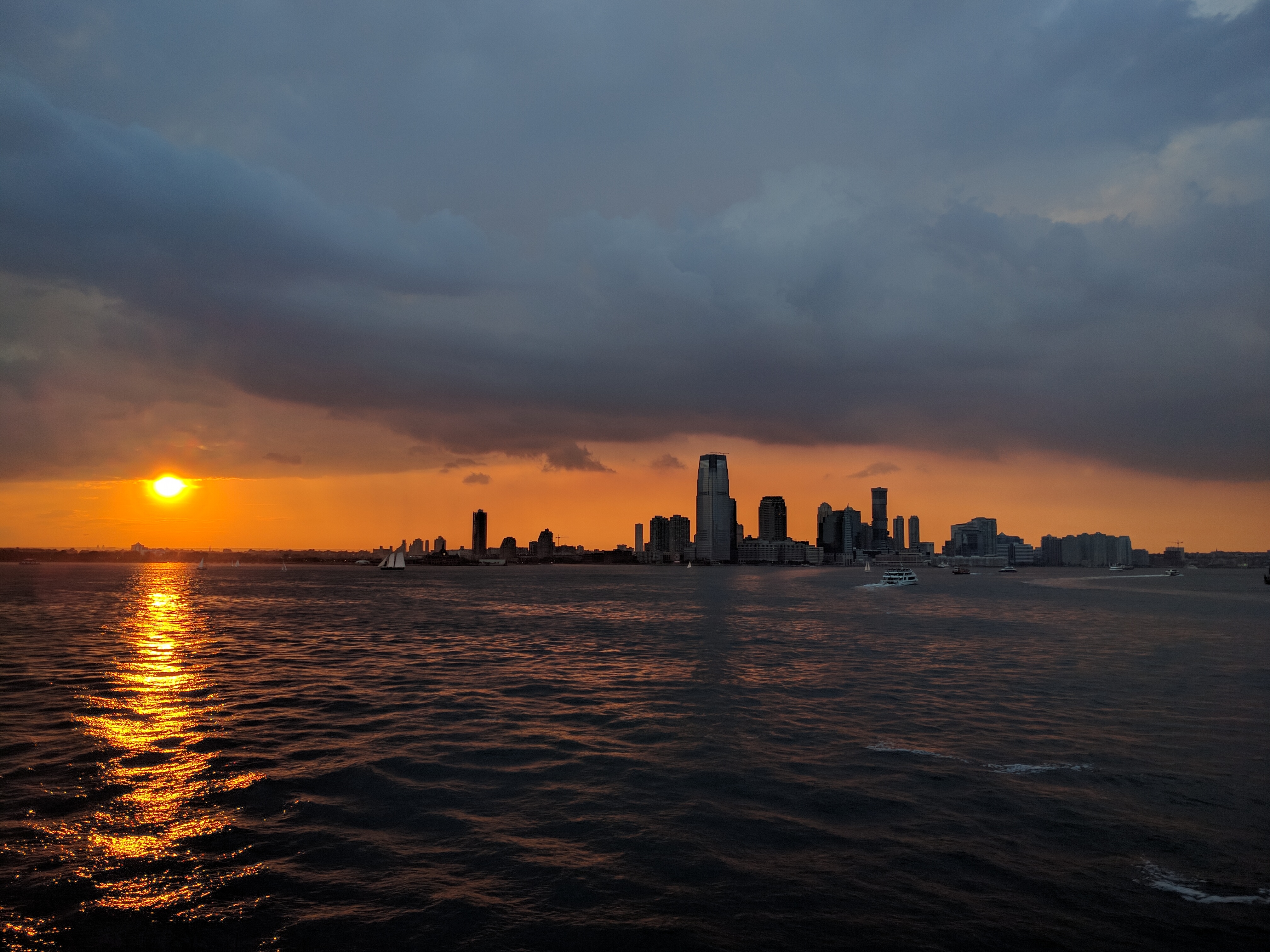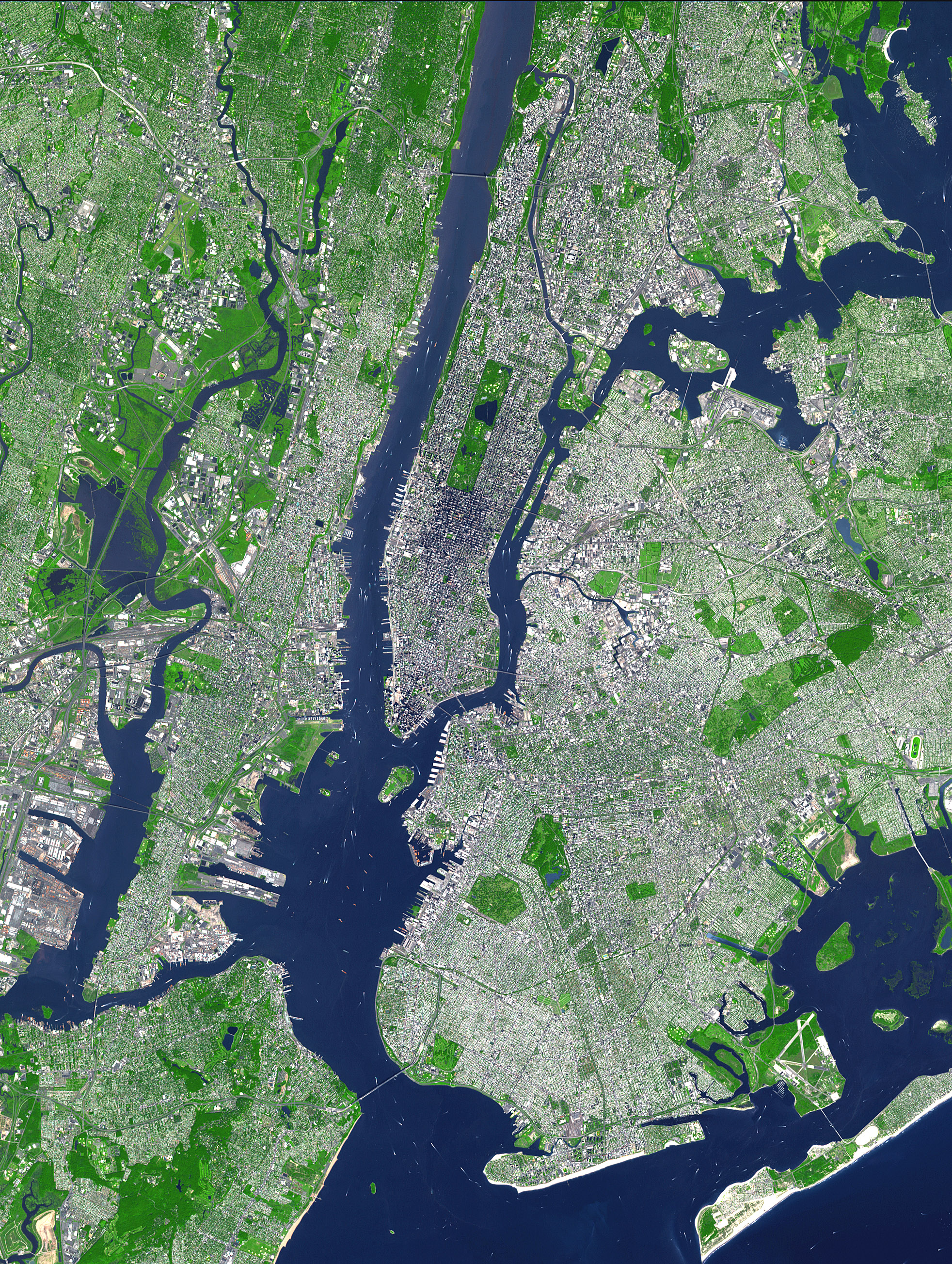|
PJP Landfill
The United States Environmental Protection Agency added the PJP Landfill site in Marion Section of Jersey City, New Jersey to the Superfund National Priorities List on September 1, 1983, because hazardous chemicals were found in the soil and groundwater. The 87-acre site located in Hudson County contained a landfill that may have been used as early as 1968 to dispose of chemical and industrial wastes. In 1971 the State certified the landfill to receive solid wastes. Approximately 11,900 people currently reside within a one-mile radius of the site. The west side of the site is bordered by the Hackensack River which is used for boating and commercial shipping. Recently, AMB Corporation purchased a portion of the site. The initial response action began in 1985 when the New Jersey Department of Environmental Protection extinguished the landfill fires, capped the landfill, and installed a gas venting system to prevent the buildup of gas within the landfill. The Remedial Action Const ... [...More Info...] [...Related Items...] OR: [Wikipedia] [Google] [Baidu] |
United States Environmental Protection Agency
The Environmental Protection Agency (EPA) is an independent executive agency of the United States federal government tasked with environmental protection matters. President Richard Nixon proposed the establishment of EPA on July 9, 1970; it began operation on December 2, 1970, after Nixon signed an executive order. The order establishing the EPA was ratified by committee hearings in the House and Senate. The agency is led by its administrator, who is appointed by the president and approved by the Senate. The current administrator is Michael S. Regan. The EPA is not a Cabinet department, but the administrator is normally given cabinet rank. The EPA has its headquarters in Washington, D.C., regional offices for each of the agency's ten regions and 27 laboratories. The agency conducts environmental assessment, research, and education. It has the responsibility of maintaining and enforcing national standards under a variety of environmental laws, in consultation with state, tr ... [...More Info...] [...Related Items...] OR: [Wikipedia] [Google] [Baidu] |
Marion Section
Marion is a section of Jersey City in Hudson County, New Jersey, United States. History The Marion Section was laid out in the 1870s and was developed in the early 20th century. The name is speculated to have come from either the old Marion Hotel or the founders of a watch company located near the city line. Marion Junction, an important rail junction in the 19th century is nearby. Originally concentrated with families of Italian ancestry, Marion was planned as a blue- collar residential community to work at Lorillard Tobacco Company, American Can Company, or nearby railroad yards. Description To the west of Journal Square and north of Holy Name Cemetery on the West Side, the Marion's two distinct neighborhoods are separated by PATH train tracks. It borders other districts of Riverbend, Croxton and the West Side, and is sometimes considered to include the area along the Hackensack Riverfront, Tonnele Circle, and neighborhood overlapping India Square. Marion is mostly a lo ... [...More Info...] [...Related Items...] OR: [Wikipedia] [Google] [Baidu] |
Jersey City, New Jersey
Jersey City is the second-most populous city in the U.S. state of New Jersey, after Newark.The Counties and Most Populous Cities and Townships in 2010 in New Jersey: 2000 and 2010 , . Accessed November 7, 2011. It is the of and the county's largest city. [...More Info...] [...Related Items...] OR: [Wikipedia] [Google] [Baidu] |
Superfund
Superfund is a United States federal environmental remediation program established by the Comprehensive Environmental Response, Compensation, and Liability Act of 1980 (CERCLA). The program is administered by the United States Environmental Protection Agency, Environmental Protection Agency (EPA). The program is designed to investigate and clean up sites contaminated with hazardous substances. Sites managed under this program are referred to as "Superfund" sites. There are 40,000 federal Superfund sites across the country, and approximately 1,300 of those sites have been listed on the National Priorities List (NPL). Sites on the NPL are considered the most highly contaminated and undergo longer-term remedial investigation and remedial action (cleanups). The EPA seeks to identify parties responsible for hazardous substances released to the environment (polluters) and either compel them to clean up the sites, or it may undertake the cleanup on its own using the Superfund (a trust ... [...More Info...] [...Related Items...] OR: [Wikipedia] [Google] [Baidu] |
Hudson County, New Jersey
Hudson County is the most densely populated county in the U.S. state of New Jersey. It lies west of the lower Hudson River, which was named for Henry Hudson, the sea captain who explored the area in 1609. Part of New Jersey's Gateway Region in the New York metropolitan area, the county's county seat and largest city is Jersey City,New Jersey County Map New Jersey Department of State. Accessed July 10, 2017. whose population as of the was 292,449. As of the |
Landfill
A landfill site, also known as a tip, dump, rubbish dump, garbage dump, or dumping ground, is a site for the disposal of waste materials. Landfill is the oldest and most common form of waste disposal, although the systematic burial of the waste with daily, intermediate and final covers only began in the 1940s. In the past, refuse was simply left in piles or thrown into pits; in archeology this is known as a midden. Some landfill sites are used for waste management purposes, such as temporary storage, consolidation and transfer, or for various stages of processing waste material, such as sorting, treatment, or recycling. Unless they are stabilized, landfills may undergo severe shaking or soil liquefaction of the ground during an earthquake. Once full, the area over a landfill site may be reclaimed for other uses. Operations Operators of well-run landfills for non-hazardous waste meet predefined specifications by applying techniques to: # confine waste to as small an area as ... [...More Info...] [...Related Items...] OR: [Wikipedia] [Google] [Baidu] |
Hazardous Waste
Hazardous waste is waste that has substantial or potential threats to public health or the environment. Hazardous waste is a type of dangerous goods. They usually have one or more of the following hazardous traits: ignitability, reactivity, corrosivity, toxicity. Listed hazardous wastes are materials specifically listed by regulatory authorities as hazardous wastes which are from non-specific sources, specific sources, or discarded chemical products. Hazardous wastes may be found in different physical states such as gaseous, liquids, or solids. A hazardous waste is a special type of waste because it cannot be disposed of by common means like other by-products of our everyday lives. Depending on the physical state of the waste, treatment and solidification processes might be required. The Basel Convention on the Control of Transboundary Movements of Hazardous Wastes and Their Disposal was signed by 199 countries and went into force in 1992. Plastic was added to the convention i ... [...More Info...] [...Related Items...] OR: [Wikipedia] [Google] [Baidu] |
Hackensack River
The Hackensack River is a river, approximately 45 miles (72 km) long, in the U.S. states of New York and New Jersey, emptying into Newark Bay, a back chamber of New York Harbor. The watershed of the river includes part of the suburban area outside New York City just west of the lower Hudson River, which it roughly parallels, separated from it by the New Jersey Palisades. It also flows through and drains the New Jersey Meadowlands. The lower river, which is navigable as far as the city of Hackensack, is heavily industrialized and forms a commercial extension of Newark Bay. Once believed to be among the most polluted watercourses in the United States, it staged a modest revival by the late 2000s. The river is divided into the upper river, north of the Oradell Reservoir and Oradell Dam, and lower river, south of the reservoir and dam. Description The Hackensack River rises in southeastern New York, in Rockland County, in the Sweet Swamp, just west of the Hudson Riv ... [...More Info...] [...Related Items...] OR: [Wikipedia] [Google] [Baidu] |
New Jersey Department Of Environmental Protection
The New Jersey Department of Environmental Protection (NJDEP) is a government agency in the U.S. state of New Jersey that is responsible for managing the state's natural resources and addressing issues related to pollution. NJDEP now has a staff of approximately 2,850. The department was created on April 22, 1970, America's first official Earth Day, making it the third state in the country to combine its environmental activities into a single, unified agency, with about 1,400 employees in five divisions, charged with responsibility for environmental protection and conservation efforts. Governor William T. Cahill appointed Richard J. Sullivan as the first commissioner. In December 2017, Catherine McCabe was nominated by New Jersey governor-elect Phil Murphy to serve as Commissioner of the New Jersey Department of Environmental Protection. Shawn M. LaTourette succeeded her in January 2021. Other former Commissioners have included Lisa P. Jackson and Bradley M. Campbell. Divisions ... [...More Info...] [...Related Items...] OR: [Wikipedia] [Google] [Baidu] |
Landfill Fire
A landfill fire occurs when waste disposed of in a landfill ignites and spreads. Two types of landfills fires are generally recognized – surface fires and deep-seated fires. Surface fires typically occur in underdeveloped countries that lack capacity to properly cover waste with inert daily and intermediate cover. Modern examples of such fires include the Deonar and Ghazipur Landfills in India, Cerro Patacon Landfill in Panama and the New Providence Landfill in the Bahamas. In landfills that do not cover their waste with daily cover, air intrusion provides the oxygen required for increased biological activity decomposition that creates substantial heat and can cause material in the landfills to spontaneously combust.. If unchecked, spontaneous combustion fires in particular tend to burn deeper into the waste mass, resulting in deep seated fires. In the U.S. 40% of landfill fires are attributed to arson. [...More Info...] [...Related Items...] OR: [Wikipedia] [Google] [Baidu] |
Ground Water
Groundwater is the water present beneath Earth's surface in rock and soil pore spaces and in the fractures of rock formations. About 30 percent of all readily available freshwater in the world is groundwater. A unit of rock or an unconsolidated deposit is called an aquifer when it can yield a usable quantity of water. The depth at which soil pore spaces or fractures and voids in rock become completely saturated with water is called the water table. Groundwater is recharged from the surface; it may discharge from the surface naturally at springs and seeps, and can form oases or wetlands. Groundwater is also often withdrawn for agricultural, municipal, and industrial use by constructing and operating extraction wells. The study of the distribution and movement of groundwater is hydrogeology, also called groundwater hydrology. Typically, groundwater is thought of as water flowing through shallow aquifers, but, in the technical sense, it can also contain soil moisture, permafro ... [...More Info...] [...Related Items...] OR: [Wikipedia] [Google] [Baidu] |
Natural Environment
The natural environment or natural world encompasses all life, living and non-living things occurring nature, naturally, meaning in this case not Artificiality, artificial. The term is most often applied to the Earth or some parts of Earth. This environment encompasses the interaction of all living species, climate, weather and natural resources that affect human survival and economic activity. The concept of the ''natural environment'' can be distinguished as components: * Complete ecological units that function as natural systems without massive civilized human intervention, including all vegetation, microorganisms, soil, Rock (geology), rocks, Atmosphere of Earth, atmosphere, and natural phenomenon, natural phenomena that occur within their boundaries and their nature. * Universal natural resources and physical phenomena that lack clear-cut boundaries, such as air, water, and climate, as well as energy, radiation, electric charge, and magnetism, not originating from civilize ... [...More Info...] [...Related Items...] OR: [Wikipedia] [Google] [Baidu] |








